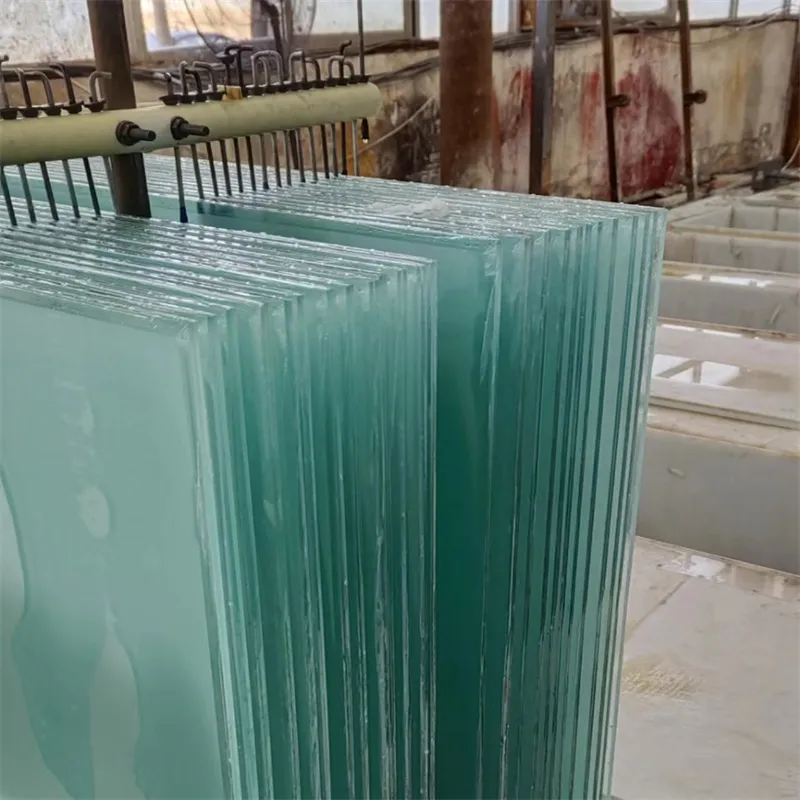Nov . 24, 2024 02:48 Back to list
laminated wire glass
Understanding Laminated Wire Glass Features and Applications
Laminated wire glass is a specialized type of glass that incorporates a layer of wire mesh within two or more sheets of glass, bonded together with an interlayer. This product combines the aesthetic qualities of glass with enhanced safety and security features, making it a popular choice for a range of applications, from architectural designs to industrial settings.
What is Laminated Wire Glass?
Laminated wire glass is made by inserting a thin layer of wire mesh between layers of glass. The wire mesh is typically made from steel, providing structural integrity and safety. The entire assembly is then subjected to heat and pressure to create a strong bond, effectively laminating the glass sheets together. This process not only enhances the strength and durability of the glass but also provides additional benefits, such as fire resistance and security.
One of the unique characteristics of laminated wire glass is its ability to hold together when shattered. In cases of impact or breakage, the glass fragments remain adhered to the interlayer, minimizing the risk of injury from sharp shards. This makes it an ideal choice for locations where safety is paramount, such as schools, hospitals, and public buildings.
Key Features
1. Safety and Security The laminated construction of wire glass provides an added layer of safety. The embedded wire mesh reinforces the glass and reduces the likelihood of shattering. In environments prone to vandalism or accidental impacts, such as storefronts and public areas, laminated wire glass can deter break-ins and enhance security.
2. Fire Resistance Many laminated wire glass products are designed to be fire-resistant, making them suitable for use in fire-rated applications. The wire mesh can help impede the spread of flames and reduce the passage of heat, giving occupants valuable time to evacuate in case of a fire.
3. Acoustic Control Laminated wire glass can also contribute to sound dampening. The interlayer between the glass panes can help reduce noise transmission, making it a suitable option for applications where acoustics are crucial, such as recording studios and conference rooms.
4. UV Protection Laminated wire glass can filter out harmful UV rays, protecting interiors from fading and damage caused by sunlight. This characteristic is particularly important for galleries, museums, and retail spaces where merchandise or art pieces are on display.
laminated wire glass

5. Variety of Designs Laminated wire glass is available in various thicknesses and can be customized in terms of the wire pattern, size, and type of glass used. This versatility allows architects and designers to create visually appealing elements that also serve practical purposes.
Applications of Laminated Wire Glass
The multifunctionality of laminated wire glass makes it suitable for a diverse range of applications
- Commercial Buildings Many businesses incorporate laminated wire glass in their storefronts and interior partitions. Its safety features provide peace of mind while allowing natural light to fill the space.
- Schools and Educational Facilities Safety is a top priority in educational settings. Laminated wire glass is often used in classrooms, hallways, and gymnasiums to ensure the protection of students and staff.
- Transportation Laminated wire glass is utilized in vehicles, including buses and trains, where it offers structural integrity and enhanced protection for passengers.
- Industrial Use In factories and manufacturing plants, this type of glass provides visibility while ensuring safety from flying debris or impacts. It is also used in areas where fire resistance is crucial.
- Residential Properties Homeowners seeking to enhance security and safety often opt for laminated wire glass in windows and glass doors.
Conclusion
In summary, laminated wire glass is a remarkable innovation that balances beauty with functionality. By combining the advantages of laminated glass and wire reinforcement, it stands out as a solution that enhances safety, security, and aesthetic appeal across various applications. As architects and designers continue to seek ways to create secure yet attractive environments, the demand for laminated wire glass is likely to grow, opening up new possibilities for its use in modern design. Whether in commercial, educational, industrial, or residential settings, this versatile material proves to be a vital component in building a safer world.
-
Safety and Style with Premium Laminated Glass Solutions
NewsJun.24,2025
-
Reinvents Security with Premium Wired Glass
NewsJun.24,2025
-
Premium Float Glass Line for Modern Architecture
NewsJun.24,2025
-
Low Emissivity Glass for Energy-Efficient Architecture
NewsJun.24,2025
-
High-Performance Insulated Glass Solutions for Modern Architecture
NewsJun.24,2025
-
Elevates Interior Style with Premium Silver Mirror
NewsJun.24,2025
Related PRODUCTS














